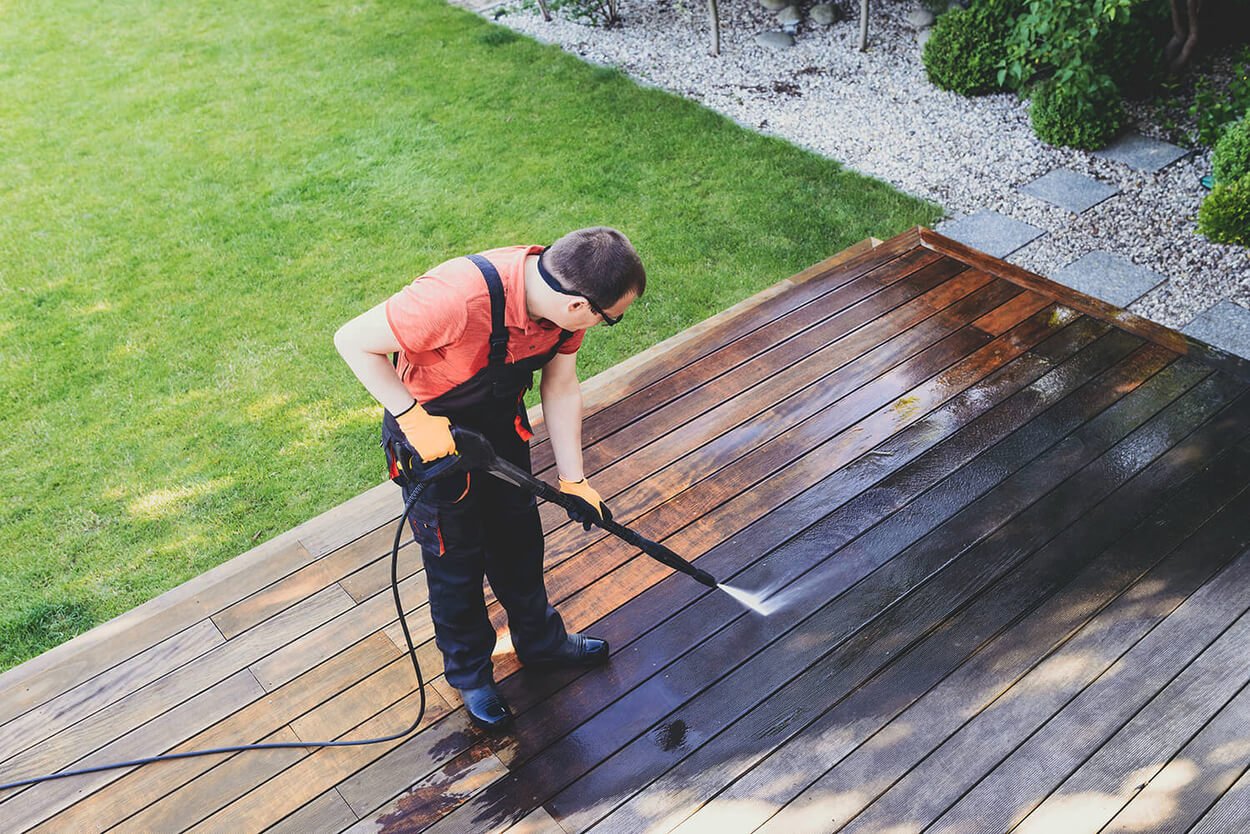
If you’ve ever searched for exterior cleaning services, you’ve probably seen both soft washing and power washing offered — sometimes side by side. But what’s the difference? Are they interchangeable? And which one is right for your home or business?
Let’s break it down in simple terms so you can make the right choice for your property. 💦🏡
💥 What Is Power Washing?
Power washing (often called pressure washing) uses a high-pressure stream of water to blast away dirt, grime, mold, algae, and stains from hard surfaces.
Typical PSI (pounds per square inch): 2,000 to 4,000+
Best for:
- Driveways and sidewalks 🛣️
- Brick walls 🧱
- Stone patios
- Heavy concrete stains
- Grease-covered garage floors
It’s powerful, fast, and extremely effective — but it’s not the right choice for every surface.
Browse Amazon For Power Washing Equipment Here
🫧 What Is Soft Washing?
Soft washing, on the other hand, uses low-pressure water (under 1,000 PSI) combined with special cleaning solutions to gently clean surfaces.
The focus is on chemical cleaning rather than high-impact force.
Best for:
- Roofs 🏠
- Vinyl or painted siding 🎨
- Wood fences and decks 🌳
- Stucco and delicate stone
- Outdoor furniture
Because the pressure is low, there’s little risk of surface damage — and the added detergents help kill mold, algae, and bacteria at the root. 🦠
Browse Amazon For Soft Washing Equipment Here
🆚 Soft Wash vs. Power Wash: Key Differences
| Feature | Power Washing 💥 | Soft Washing 🫧 |
|---|---|---|
| Pressure | High (2,000–4,000+ PSI) | Low (under 1,000 PSI) |
| Cleaning Agent | Often just water | Specialized detergents |
| Target Contaminants | Dirt, mud, concrete stains | Mold, mildew, algae, pollen |
| Surface Suitability | Hard surfaces only | Delicate or painted surfaces |
| Risk of Damage | Moderate to high | Low |
| Longevity of Clean | Short-term | Longer-lasting |
🚧 What Happens If You Use the Wrong Method?
Choosing the wrong cleaning method can lead to expensive mistakes:
- Power washing a roof? You could strip away shingles or force water underneath them.
- Power washing soft siding? You might cause dents, leaks, or paint chipping.
- Soft washing a driveway? You may not get the results you want.
🎯 Always match the method to the surface.
🧪 What’s in the Soft Washing Solution?
Most soft wash formulas contain:
- Sodium hypochlorite (bleach)
- Surfactants (help loosen dirt)
- Water
- Sometimes scent boosters or mold inhibitors
These solutions are designed to kill organic growth like algae and mold — not just wash it away. This means your surfaces stay cleaner, longer.
🌿 Eco-friendly versions are available and often used by pros who follow local environmental regulations.
🛠️ Equipment Differences
Soft washing typically uses:
- A low-pressure pump or garden hose
- Long-reaching nozzles
- Chemical injection systems
Power washing uses:
- Gas or electric machines
- High-pressure hoses and steel-braided lines
- Adjustable nozzles or turbo tips
🧰 Each method has its own tools, and neither is inherently “better” — it depends on the job.
💡 Which One Should You Choose?
Ask yourself:
- Is the surface hard or delicate?
- Are you dealing with mold/mildew or just dirt?
- Do you want deep cleaning or surface cleaning?
If you’re still unsure, most professional cleaning services will recommend a method based on your home’s materials and current condition.
✅ Final Verdict
Both soft washing and power washing are powerful tools for keeping your home or business clean, healthy, and looking its best. Knowing the difference helps you:
- Avoid costly damage 🚫
- Get longer-lasting results ⏳
- Choose the right service for your property 🎯
🧼 Soft washing is the gentle giant.
💥 Power washing is the heavyweight champ.
Choose wisely — and your surfaces will thank you!



